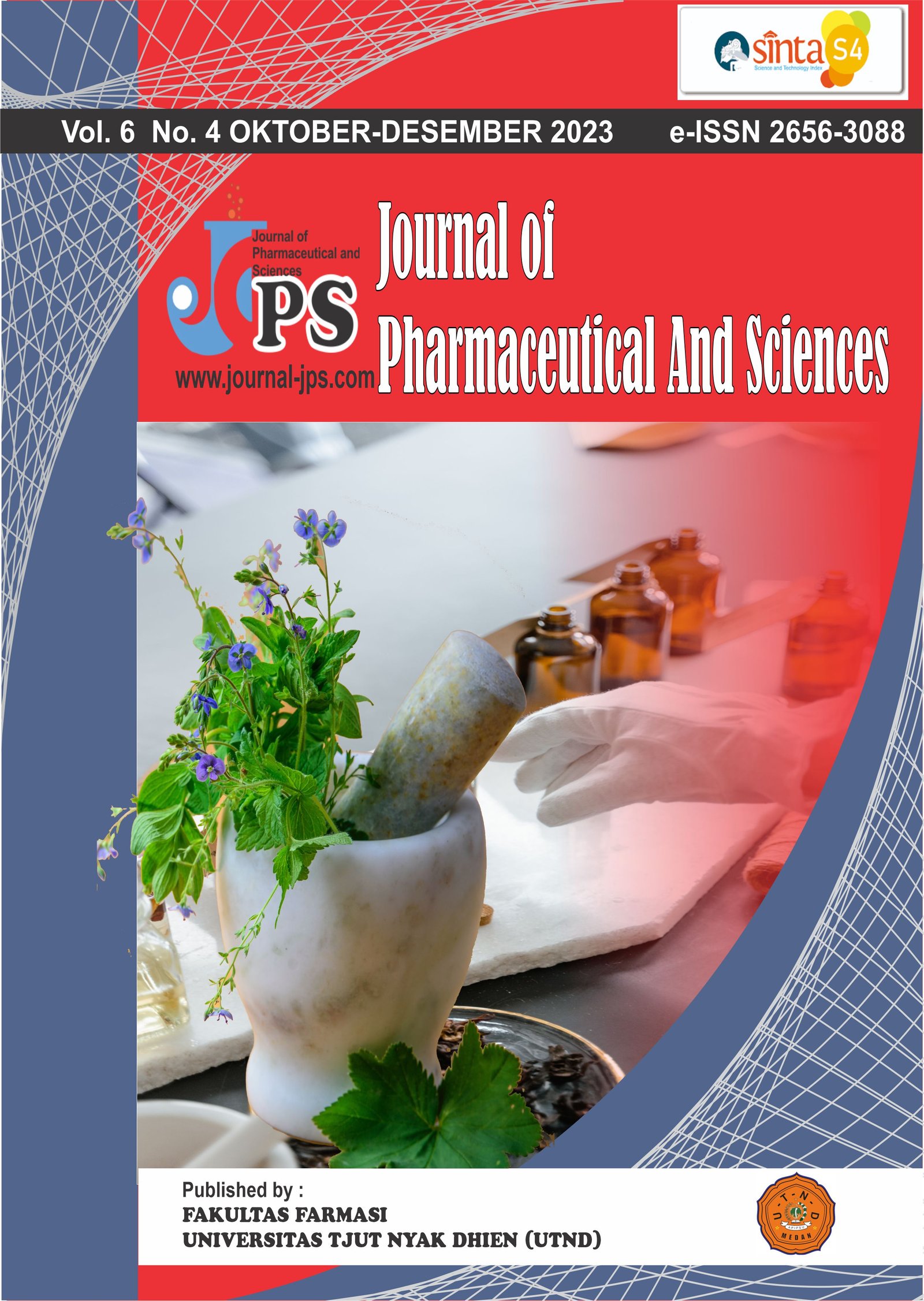Pig DNA identification as a validation method for halal authentication using polymerase chain reaction
Main Article Content
Page: 1778-1784
Abstract
To protect consumers from fake halal labelling on food products, cosmetics and medicines, a method is needed to guarantee a product's Halal. Pork is one type that is often used to mix with beef because the two types of meat have physical similarities if not carefully considered. DNA-based analysis, often used for halal authentication, is the real-time PCR method, so this study aims to prove that conventional PCR methods can detect DNA at the same concentration. This study uses two parameters: the specificity test carried out using pig DNA samples and cow and chicken DNA as a comparison. The second parameter is the detection limit test on absolute DNA carried out at 4 concentrations, namely 50, 5, 0.5 and 0.05 ng/µL, while the relative detection limit test (pork-cow mixture) with variations in pork concentration, namely 100%, 5%, 3%, 1%, and 0.5%. The analysis showed that the primers were specific to pig DNA with an absolute detection limit of 0.05 ng/µL and a relative detection limit of 0.5%. This PCR method meets the validation requirements for identifying target species so that it can be used for halal authentication of various products.
Downloads
Article Details

This work is licensed under a Creative Commons Attribution-NonCommercial-ShareAlike 4.0 International License.
References
Aina, G. et al. (2019) ‘The employment of q-PCR using specific primer targeting on mitochondrial cytochrome-b gene for identification of wild boar meat in meatball samples’, Journal of Advanced Veterinary and Animal Research, 6(3), p. 300. Available at: https://doi.org/10.5455/javar.2019.f348.
Amresco (1998) ‘Electrophoresis Loading Dyes for Acrylamide and Agarose Electrophoresis (E190, E269, E274)’. Available at: https://www.interchim.fr/ft/6/662600.pdf (Accessed: 10 September 2023).
Che Man, Y.B. et al. (2012) ‘Porcine-Specific Polymerase Chain Reaction Assay Based on Mitochondrial D-Loop Gene for Identification of Pork in Raw Meat’, International Journal of Food Properties, 15(1), pp. 134–144. Available at: https://doi.org/10.1080/10942911003754692.
FDA (2019) ‘Guidelines for the Validation of Analytical Methods for Nucleic Acid Sequence-Based Analysis of Food, Feed, Cosmetics, and Veterinary Products’. U.S. Food and Drug Administration.
Guntarti, A. et al. (2015) ‘FTIR Spectroscopy in Combination with Chemometrics for Analysis of Wild Boar Meat in Meatball Formulation’, Asian Journal of Biochemistry, 10(4), pp. 165–172. Available at: https://doi.org/10.3923/ajb.2015.165.172.
ICH (2022) ‘ICH guideline Q2(R2) on validation of analytical procedures’. European Medicines Agency. Available at: https://www.ema.europa.eu/en/ich-q2r2-validation-analytical-procedures-scientific-guideline (Accessed: 9 September 2023).
IkaWidyasa, Y., . S. and Rohman, A. (2015) ‘Detection of Rat Meat Adulteration in Meat Ball Formulations Employing Real-Time PCR’, Asian Journal of Animal Sciences, 9(6), pp. 460–465. Available at: https://doi.org/10.3923/ajas.2015.460.465.
Li, Jinchun et al. (2021) ‘Identification of eleven meat species in foodstuff by a hexaplex real-time PCR with melting curve analysis’, Food Control, 121, p. 107599. Available at: https://doi.org/10.1016/j.foodcont.2020.107599.
Marín, D.V. et al. (2021) ‘An optimised high-quality DNA isolation protocol for spodoptera frugiperda J. E. smith (Lepidoptera: Noctuidae)’, MethodsX, 8, p. 101255. Available at: https://doi.org/10.1016/j.mex.2021.101255.
Mariyani, Sismindari, and Rumiyati (2021) ‘Validasi Metode Real-Time Polymerase Chain Reaction untuk Deteksi DNA Babi (Sus Scrofa Domestica) dan Celeng (Sus Barbatus) pada Sosis Sapi’, Syntax Literate: Jurnal Ilmiah Indonesia, 6(8). Available at: https://doi.org/10.36418/syntax-literate.v6i8.3806.
Maryam, St. et al. (2016a) ‘Determination of Porcine Contamination in Laboratory Prepared dendeng Using Mitochondrial D-Loop686 and cyt b Gene Primers by Real Time Polymerase Chain Reaction’, International Journal of Food Properties, 19(1), pp. 187–195. Available at: https://doi.org/10.1080/10942912.2015.1020434.
Maryam, St. et al. (2016b) ‘Determination of Porcine Contamination in Laboratory Prepared dendeng Using Mitochondrial D-Loop686 and cyt b Gene Primers by Real Time Polymerase Chain Reaction’, International Journal of Food Properties, 19(1), pp. 187–195. Available at: https://doi.org/10.1080/10942912.2015.1020434.
Nakyinsige, K., Man, Y.B.C. and Sazili, A.Q. (2012) ‘Halal authenticity issues in meat and meat products’, Meat Science, 91(3), pp. 207–214. Available at: https://doi.org/10.1016/j.meatsci.2012.02.015.
Sasmito, D.E.K., Kurniawan, R. and Izzati, M. (2014) ‘Karakteristik Primer pada Polymerase Chain Reaction (PCR) untuk Sekuensing DNA: Mini Review’, Seminar Nasional Informatika Medis (SNIMed) V [Preprint].
Sepminarti, T. et al. (2015) ‘Real-Time Polymerase Chain Reaction for Halal Authentication of Gelatin in Soft Candy’, Asian Journal of Biochemistry, 11(1), pp. 34–43. Available at: https://doi.org/10.3923/ajb.2016.34.43.
Sismindari (2012) Replikasi DNA Dan Mutasi, 1st ed, Seri Biologi Molekuler Farmasi. Yogyakarta: Pustaka Pelajar (1).
Skouridou, V. et al. (2019) ‘Duplex PCR-ELONA for the detection of pork adulteration in meat products’, Food Chemistry, 287, pp. 354–362. Available at: https://doi.org/10.1016/j.foodchem.2019.02.095.
Wahyuni, S., Maryam, S. and Aminah, A. (2019) ‘Validasi Metode Analisis Cemaran DNA Babi pada Bakso Sapi Menggunakan Primer Mitokondria D-Loop22 dengan Metode Polymerase Chain Reaction (PCR): Analysis Method Validation of Pig DNA Contamination in Cow Meatballs Using Mitochondrial Primer D-Loop22 by Polymerase Chain Reaction (PCR) Method’, Jurnal Farmasi Galenika (Galenika Journal of Pharmacy) (e-Journal), 5(1), pp. 65–72. Available at: https://doi.org/10.22487/j24428744.2019.v5.i1.12035.





